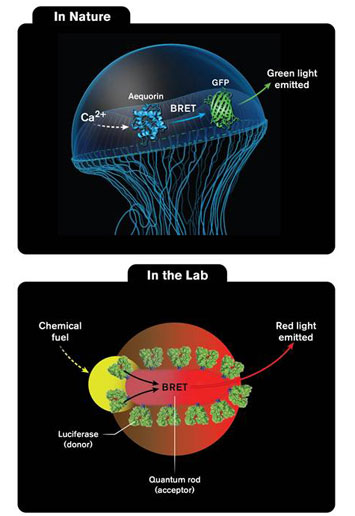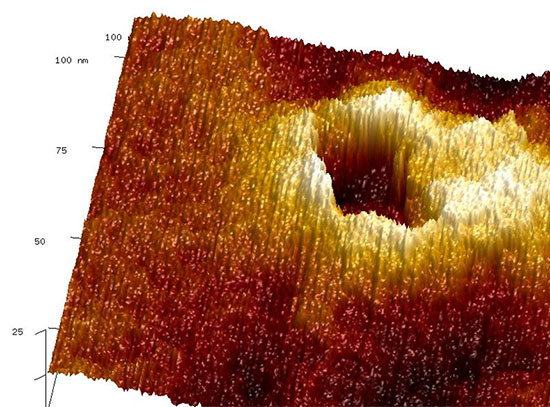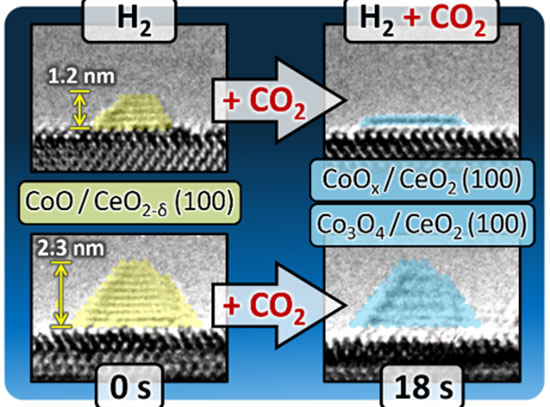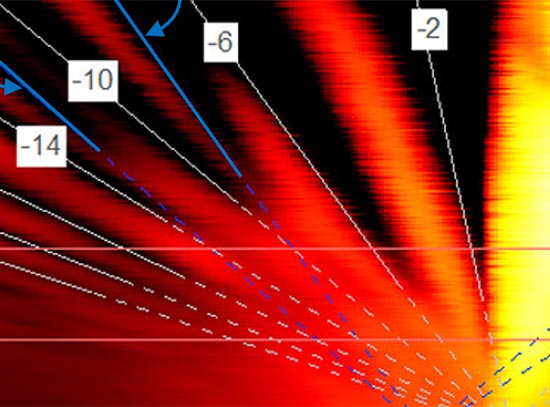Hybrid Nanorods Glow Like Jellyfish
May 23, 2017
What is the scientific achievement?
Jellyfish get their beautiful, 'greenish-blue glow' from chemically-activated blue luminescence, which is converted to green through a process known as bioluminescence resonant energy transfer (BRET).
Inspired by this natural process, CFN users from Syracuse designed and assembled enzyme/nanorod hybrid nanomaterials to perform efficient BRET upon chemical stimulation. Chemically stimulating the enzymes results in light emission from the nanorod, thus converting chemical energy to light at the nanoscale.
Why does this achievement matter?
This research demonstrates control of a biological function (bioluminescence resonant energy transfer efficiency) through design of a biotic-abiotic nanomaterial.
What are the details?
 enlarge
enlarge
(Top) Jellyfish glow by converting blue luminescence to green through BRET. Bottom A luciferase enzyme/nanorod biotic-abiotic nanomaterial hybrid emits red light upon chemical stimulation, using the same bilogical function
CFN Capabilities:
The CFN Advanced Optical Microscopy facilities were used to perform BRET experiments.
Publication Reference
R. Alam,1 L.M. Karam,1 T.L. Doane,1 K. Coopersmith,1 D.M. Fontaine,2 B.R. Branchini,2 M.M. Maye,1 Probing Bioluminescence Resonance Energy Transfer in Quantum Rod–Luciferase Nanoconjugates, ACS Nano 10, 1969 (2016).
DOI: 10.1021/acsnano.5b05966
https://phys.org/news/2016-02-syracuse-chemists-combine-biology-nanotechnology.html
Acknowledgement of Support
The work was supported by the Air Force Office of Scientific Research (FA9550-10-1-0033, FA9550-14-0100). This research used resources of the Center for Functional Nanomaterials, which is a U.S. DOE Office of Science Facility, at Brookhaven National Laboratory under Contract No. DE-SC0012704
2017-12253 | INT/EXT | Newsroom









